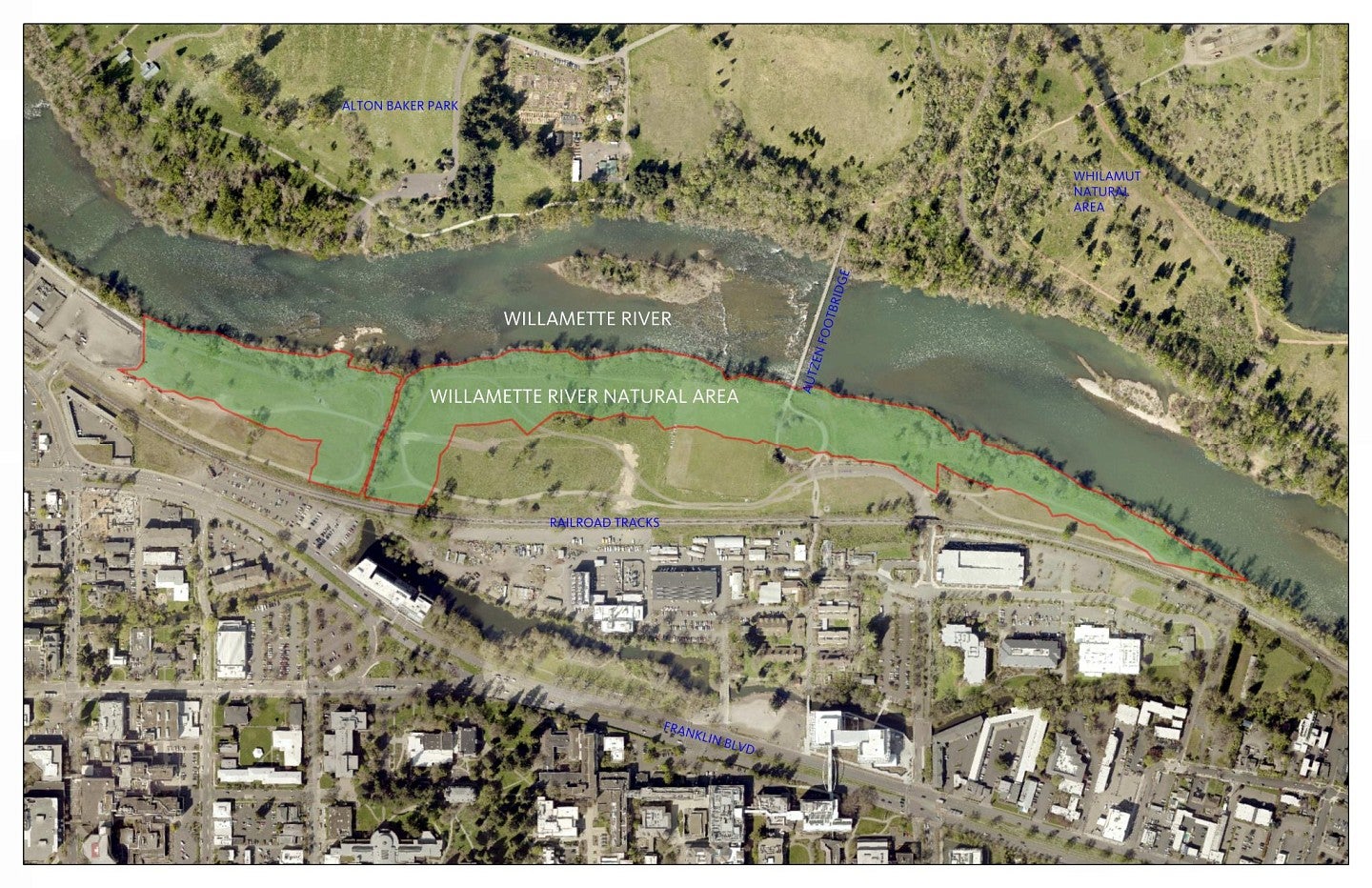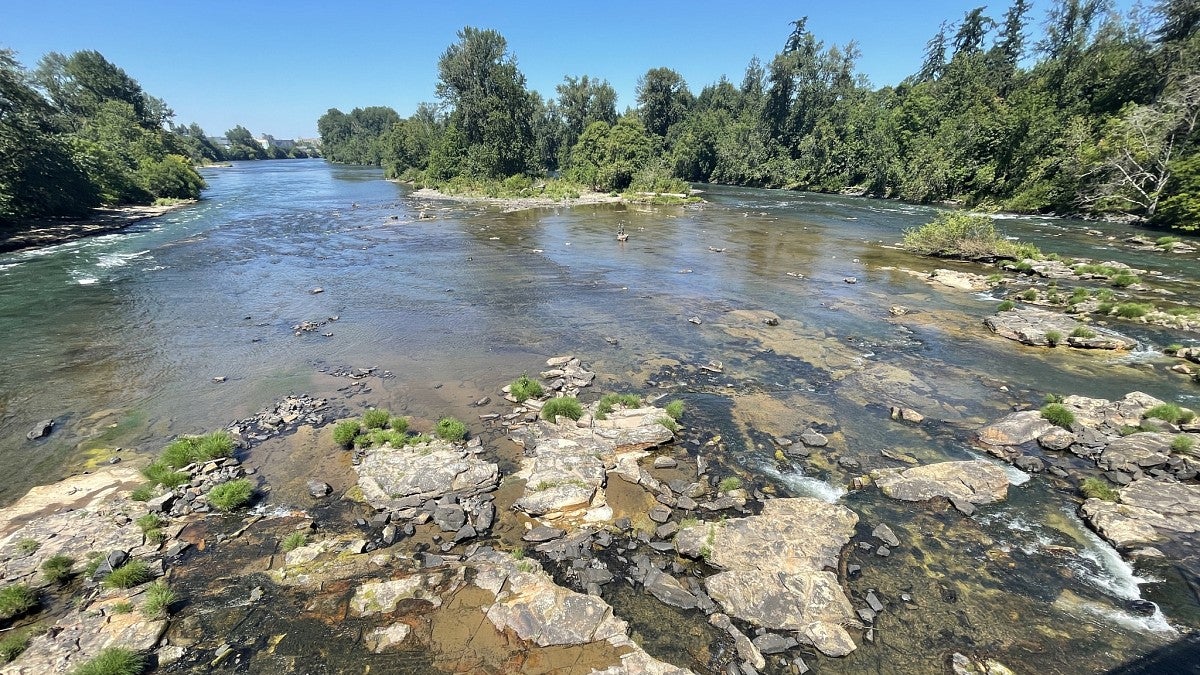
Willamette River Natural Area (WRNA)
A vision for restoration, engagement, and research at the University of Oregon.

Mission Statement
Conserve, enhance, and restore regionally important habitat within the WRNA to support a diversity of native plant and wildlife species while providing outstanding learning and recreational opportunities for students and community members alike.
Upcoming Events






